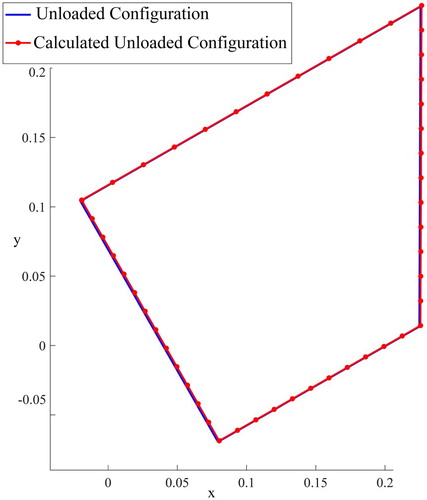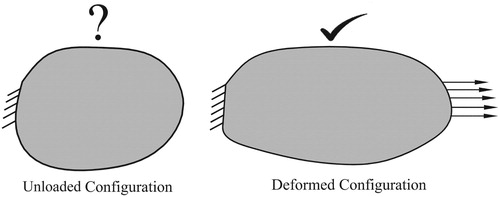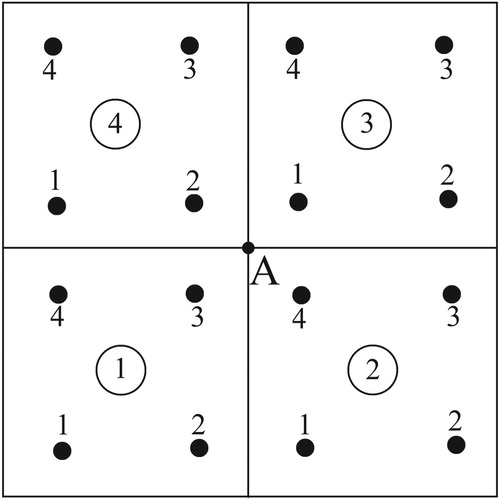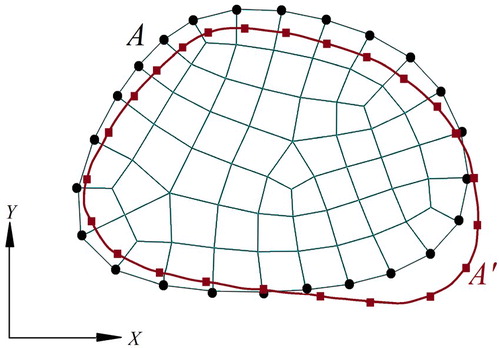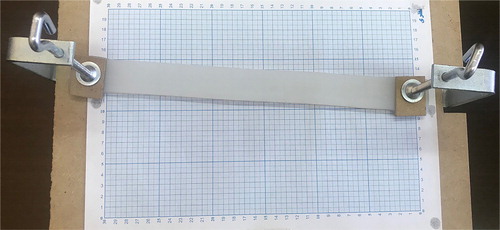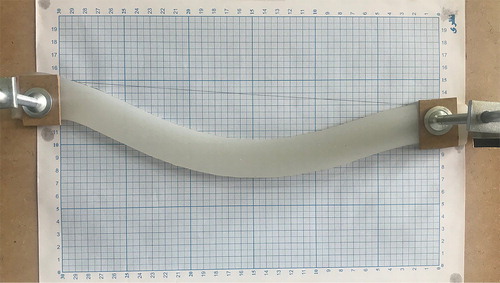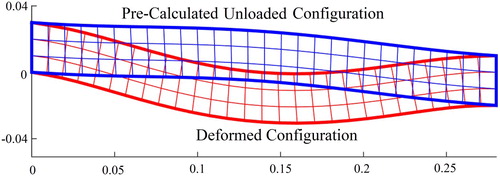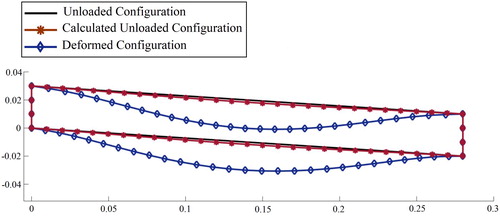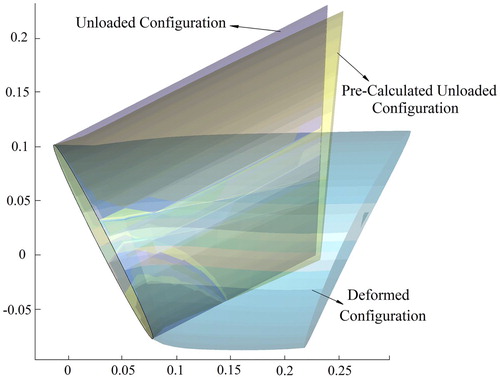Figures & data
Figure 4. Dimensions of the hyperelastic body with fixed boundary conditions in its unloaded configuration.
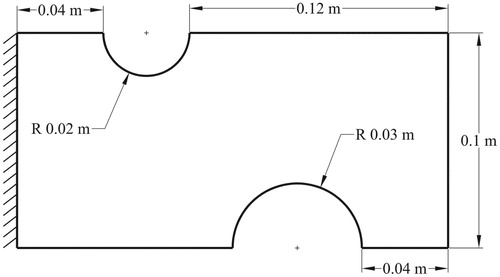
Figure 5. The unloaded, deformed and pre-calculated configurations of the body in the plane stress condition.
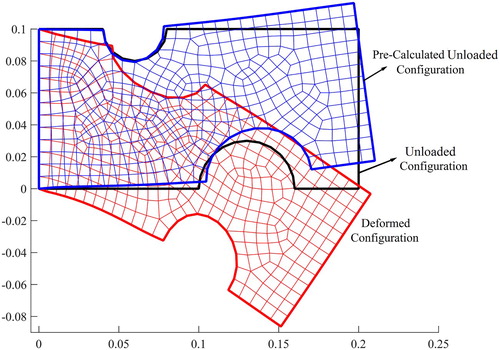
Figure 6. The unloaded, deformed and pre-calculated configurations of the body in plane strain condition.
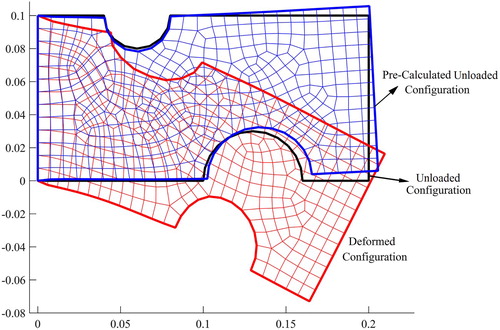
Figure 7. The recovered unloaded configuration in comparison with the exact one in (a) the plane stress condition, (b) the plane strain condition.
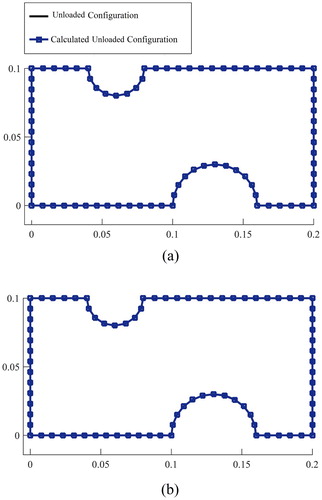
Table 1. The inverse problem results for plane stress and plane strain conditions.
Table 2. Results of the inverse problem for the plane strain case with different levels of added errors in the input data.
Figure 8. The unloaded configuration and calculated unloaded configuration together with deformed configurations of the body with 6% error and without error in the input data for the plane strain condition.
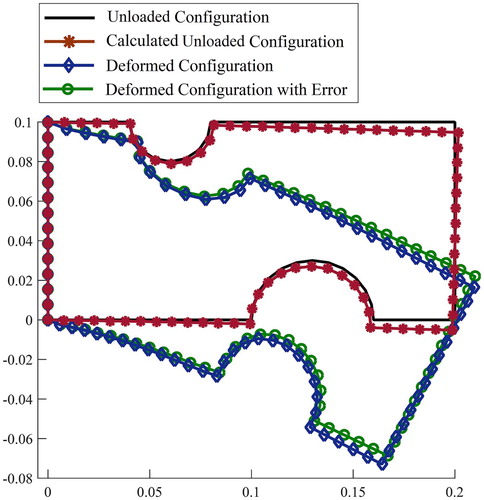
Figure 14. Dimensions and boundary conditions of the 3D hyperelastic body in its unloaded configuration, (a) side view, (b) 3D view.

Figure 16. The recovered unloaded configuration in x-y plane in comparison to the exact unloaded configuration.
